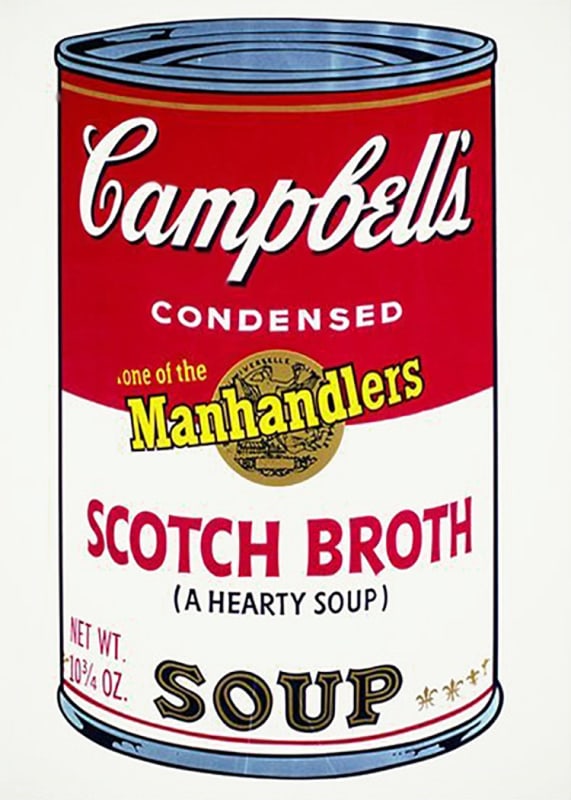Andy Warhol
Scotch Broth from 'Campbell's Soup II', 1969
Signed, numbered and dated in ink on reverse
Just in time for Christmas, we've got a fabulous new item on consignment.
They don't come much more iconic than Warhol's soup cans. If you asked a room full of people what image they most associated with ol' Andy, they'd probably be split down the middle between Campbell's and Marilyn.
In 1962, Warhol's first solo exhibition of paintings consisted of 32 different soup cans - one for every flavour - on canvas. These humble foodstuffs helped propel him to the forefront of American art and cemented his vision as the definitive lens through which to explore consumer culture. He thought of them as portraits that emphasised how similar we all are; it's the name that changes, not the essence.
They were hand-painted with brushes, using a projector, tracing and stamping...it seems almost quaint when you consider how emphatic Warhol's embrace of commercial printing techniques would come to be. At this point Andy was still a painter, not yet the detached purveyor of irony, or the "ash-pale hermit surrounded by a halo of beautiful and amoral disciples [magnifying] the impression of manipulated glamour" that he would soon become.
He soon came to realise that he could achieve a more realistic mass-produced aesthetic by adopting the silkscreen process. He began by printing directly onto canvas and was soon exploring the possibility of creating multiples on paper. He believed that art should be for everybody and once said that the best thing about America was that the richest consumer bought essentially the same things as the poorest. By releasing his soup cans in different formats at different price points, his consumerist approach to making art assumed its logical conclusion.
The soup cans that reach the art market are generally screenprints from two portfolios of ten images that he published in 1968 and 1969. Our can of "Scotch Broth" is from the second set. Warhol instinctively understood the power of images and had an uncanny ability to select seemingly minor details from the blur of pop culture that speak with great resonance once isolated. Cool, flat and mechanical, his prints embody his artistic philosophy like no other facet of his work.
There's little difference technically between Warhol's screenprints on canvas and those on paper, but the ones on canvas will often sell for millions. It can be argued that the prints on paper thus represent incredible value.
Any questions? We are happy to help. Call: 0117 279 6402 or send us a message now.


